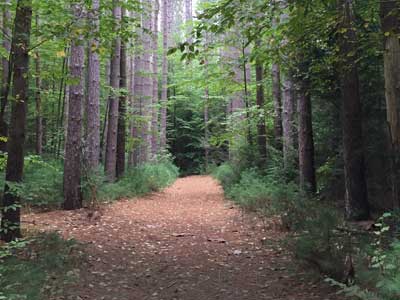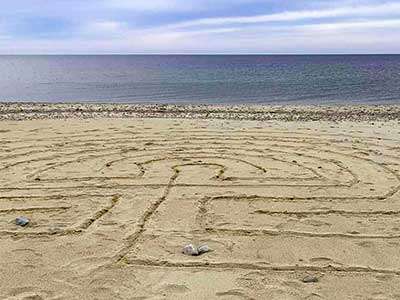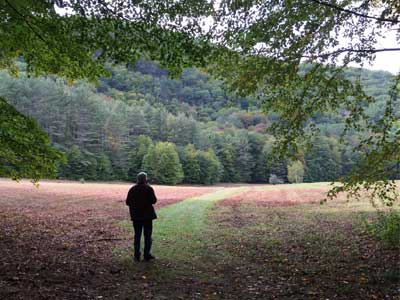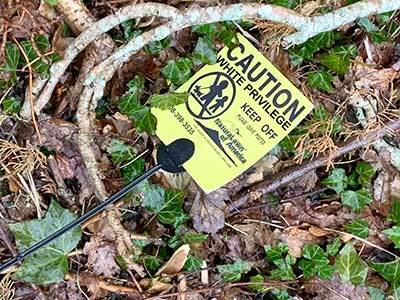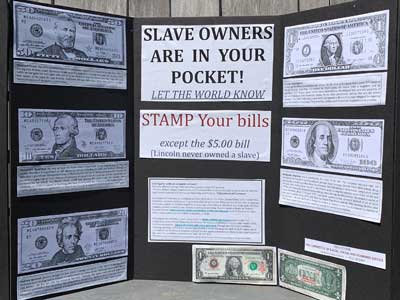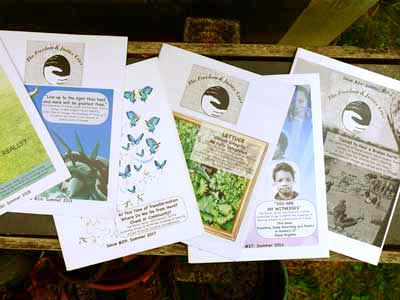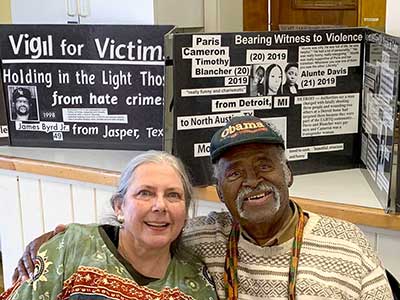by Ursula Wolfe-Rocca | Date Unknown
An 11th-grade student leaned back in his chair at Lincoln High School in Portland, Oregon, and said, “Absurd. That is the only way to describe those numbers. They are absurd.” He and his classmates had just read statistics about the racial wealth gap in their Political Economy class: White households are worth at least 10 times as much as Black households; only 15 percent of whites have zero or negative wealth while a third of Blacks do; Black families making $100,000 typically live in the kinds of neighborhoods inhabited by white families making $30,000. These numbers are absurd, and they are not accidental. The mixer role play is based on Richard Rothstein’s The Color of Law, which shows in exacting detail how government policies segregated every major city in the United States with dire consequences for African Americans.
TAGS: [Assumptions] [Teachers] [Economics] [History] [Politics] [Housing] [Racial Covenants] [Systemic Racism] [White Supremacy] [White Culture] [White Privilege] [Reparations]
Resource Links Tagged with "Assumptions"
I’m Black and Afraid of ‘White Fragility’; Robin DiAngelo’s Corporate-Friendly Anti-Racist Screed Actually Reinforces Racist Beliefs
by Cedrick-Michael Simmons | June 2020
DiAngelo views racism as a problem to be combated with sensitivity training. The premise of diversity and cultural competency training is that by educating European-Americans on the persistence and consequences of racism, they can be transformed into non-racist (or, ideally, anti-racist) individuals. But diversity training has been shown to be a largely ineffective way to address racism in American workplaces. These lectures and workshops do little—if anything—in the way of addressing the structural tensions that workers must navigate on a daily basis.
TAGS: [Strategies] [2020’s] [White Fragility/Tears] [Anti-Racism] [Accountability] [Art & Culture] [Black Lives Matter] [Denial] [Myths] [Assumptions] [Systemic Racism]
The Story of Seneca Village
by Central Park Conservancy | January 2018
Before Central Park was created, the landscape along what is now the Park’s perimeter from West 82nd to West 89th Street was the site of Seneca Village, a community of predominantly African-Americans, many of whom owned property. By 1855, the village consisted of approximately 225 residents, made up of roughly two-thirds African-Americans, one-third Irish immigrants, and a small number of individuals of German descent. One of few African-American enclaves at the time, Seneca Village allowed residents to live away from the more built-up sections of downtown Manhattan and escape the unhealthy conditions and racism they faced there.
TAGS: [Assumptions] [2010’s] [History] [Housing]
What Toni Morrison Taught Me about My People, the Quakers
by Becky Ankeny | July 2020
Mr. and Miss Bodwin, brother and sister, Quakers, for decades worked to abolish slavery from their home in Cincinnati. Their anti-slavery stance was based on the teaching that “human life is holy, all of it.” This work gave their lives meaning and purpose, so much so that to Edward Bodwin, life after the Civil War had lost its “spit and conviction.”…Nearly a decade after emancipation, when 18-year-old Denver goes to ask the Bodwins for work, she knocks on the front door. The Black maid tells her that the first thing she has to learn is which door to knock on, namely, the back door. On her way out the back door, Denver sees a figurine of a kneeling Black man, head back, mouth wide open to hold any number of small objects or even jelly. Painted across the pedestal he knelt on were the words “At Yo Service.”
TAGS: [Racial Terrorism] [Assumptions] [2020’s] [Quaker] [Slavery] [History] [Civil War] [Systemic Racism] [White Supremacy] [White Culture] [White Blindness] [Faith-Based/Spiritual]
The Dehumanizing Condescension of White Fragility; The Popular Book Aims to Combat Racism but Talks Down to Black People.
by John McWhorter| July 2020
“ … herein is the real problem with White Fragility. DiAngelo does not see fit to address why all of this agonizing soul-searching is necessary to forging change in society. One might ask just how a people can be poised for making change when they have been taught that pretty much anything they say or think is racist and thus antithetical to the good. What end does all this self-mortification serve? Impatient with such questions, DiAngelo insists that “wanting to jump over the hard, personal work and get to ‘solutions’” is a “foundation of white fragility.” In other words, for DiAngelo, the whole point is the suffering. And note the scare quotes around solutions, as if wanting such a thing were somehow ridiculous. A corollary question is why Black people need to be treated the way DiAngelo assumes we do. The very assumption is deeply condescending to all proud Black people. In my life, racism has affected me now and then at the margins, in very occasional social ways, but has had no effect on my access to societal resources; if anything, it has made them more available to me than they would have been otherwise. Nor should anyone dismiss me as a rara avis. Being middle class, upwardly mobile, and Black has been quite common during my existence since the mid-1960s, and to deny this is to assert that affirmative action for Black people did not work.
TAGS: [Assumptions] [Individual Change] [2020’s] [White Fragility/Tears] [White Defensiveness] [Systemic Racism] [White Supremacy] [Anti-Racism] [Myths] [“All Lives Matter”] [Denial]
Here Are Concrete Actions White People Can Take to Fight Racial Injustice
“My call to action challenges white professionals to lean into discomfort and bring about change.”
by TaLona Holbert | July 2020
Every day of my life, I have experiences that infer Black inferiority and anti-Blackness. It is exhausting to wake up each day and convince myself and others that I belong, that my life matters and that I am capable, despite being surrounded by social, cultural and professional cues that suggest otherwise. No matter how subtle or seemingly innocuous signals of Black exclusion and inferiority are, they diminish Black people’s dignity and humanity, erode our identity as Americans, and reinforce decades of stereotypes and discrimination intended to cement our status as second-class citizens.
TAGS: [Individual Change] [2020’s] [Black Lives Matter] [Policing] [Systemic Racism] [Confederate Monuments] [White Culture] [White Supremacy] [White Privilege] [White Fragility/Tears] [White Blindness] [Assumptions]
What We Get Wrong about ‘People of Color’
by Jason Parham | November 2019
The phrase turns a plural into a singular, an action that betrays all the ways we have come to understand contemporary identity.
This past summer, in one of the most bizarre applications, Representative Mike Kelly of Pennsylvania, who is white and Republican, described himself as a “person of color” when discussing Trump’s comments about four Democratic congresswomen. “It’s time to stop fixating on our differences—particularly our superficial ones,” he said.
TAGS: [Assumptions] [2010’s] [Systemic Racism] [Prison System] [Politics] [Racial Covenants] [White Privilege] [White Supremacy]
[White Defensiveness] [White Blindness] [Denial] [“All Lives Matter”] [White Fragility/Tears] [White Culture]
Textbook Racism; How Scholars Sustained White Supremacy
*Paywall Alert
by Donald Yacovone | April 2018
After reviewing my first 50 or so textbooks, one morning I realized precisely what I was seeing, what instruction, and what priorities were leaping from the pages into the brains of the students compelled to read them: white supremacy. One text even began with the capitalized title: “The White Man’s History.” Across time and with precious few exceptions, African-Americans appeared only as “ignorant negroes,” as slaves, and as anonymous abstractions that only posed “problems” for the supposed real subjects of history: white people of European descent.
TAGS: [Assumptions] [2010’s] [White Supremacy] [History] [White Culture] [White Privilege] [Accountability] [Myths]
How Slaveholders in the Caribbean Maintained Control The whip was not the only tool in their arsenal: slaveholders were masters of manipulation too.
by Christer Petley | November 2018
As elsewhere in the Americas, the right of masters in Jamaica to punish slaves was enshrined in law, and the violence that sustained slavery went far beyond whipping. Punishments could include amputation, disfiguring, branding and more. … Privileging some enslaved people above others was another effective means of sowing discord. Slaveholders encouraged complex social hierarchies on the plantations that amounted to something like a system of ‘class’. At the top of plantation slave communities in the sugar colonies of the Caribbean were skilled men, trained up at the behest of white managers to become sugar boilers, blacksmiths, carpenters, coopers, masons and drivers. Such men were, in general, materially better-off than field slaves (most of whom were women), and they tended to live longer.
TAGS: [Assumptions] [2010’s] [Slavery] [History] [White Supremacy] [White Culture] [White Privilege] [Silencing POC] [Systemic Racism] [Economics] [Denial]
White Supremacy Shaped American Christianity, Researcher Says
by Carol Kuruvilla | July 2020
It wouldn’t be hard for many white Christians to find examples of white supremacy’s claims on their own family’s trees, Jones said. But white Christians’ image of themselves and their religion has been warped by what Jones calls “white-supremacy-induced amnesia.” Jones wrestles with that amnesia in his new book, “White Too Long: The Legacy of White Supremacy in American Christianity.” He argues that white Christians ― from evangelicals in the South to mainline Protestants in the Midwest to Catholics in the Northeast ― weren’t just complacent onlookers while political leaders debated what to do about slavery, segregation and discrimination. White supremacist theology played a key role in shaping the American church from the very beginning, influencing not just the way denominations formed but also white Christians’ theology about salvation itself.
TAGS: [Assumptions] [2020’s] [Faith-Based/Spiritual] [History] [Slavery] [Systemic Racism] [White Supremacy] [White Blindness] [White Privilege] [Police Shootings] [Accountability] [Politics]
For Local Native Americans, a Reckoning over Hurtful Images Goes Way Beyond One South Philadelphia Statue
by Jeff Gammage and Maddie Hanna | July 2020
James Logan was not just a colonial statesman and Philadelphia mayor. He was an architect of the infamous “Walking Purchase,” a scheme in which he and others swindled the original Lenape inhabitants out of perhaps a million acres of land in 1737. “You see these things every single day,” said Mach, 33, a University of Pennsylvania doctoral student who studies how Native Americans are represented in museums. “This stuff is just everywhere.”
Across the United States, the Black Lives Matter protests against racism and police violence have also ignited new discussions and demands over the use of Native images, symbols and mascots, and the future of monuments to men who harmed and killed indigenous people.
TAGS: [Assumptions] [2020’s] [Myths] [Systemic Racism] [Indigenous] [Policing] [History] [Economics] [White Culture] [White Supremacy] [Confederate Monuments]
It Took 10 Minutes to Convict 14-Year-Old George Stinney Jr. It Took 70 Years after His Execution to Exonerate Him.
by Lindsey Bever | December 2014
In March 1944, deep in the Jim Crow South, police came for 14-year-old George Stinney Jr. His parents weren’t at home. His little sister was hiding in the family’s chicken coop behind the house in Alcolu, a segregated mill town in South Carolina, while officers handcuffed George and his older brother, Johnnie, and took them away.
Two young white girls had been found brutally murdered, beaten over the head with a railroad spike and dumped in a water-logged ditch. He and his little sister, who were black, were said to be last ones to see them alive. Authorities later released the older Stinney – and directed their attention toward George. On June 16, 1944, he was executed, becoming the youngest person in modern times to be put to death. On Wednesday, 70 years later, he was exonerated.
TAGS: [Racial Terrorism] [2010’s] [Systemic Racism] [Policing] [Prison System] [White Supremacy] [History] [Black Lives Matter] [White Privilege] [White Culture] [-ing While Black] [Denial] [Assumptions] [Accountability]
Why the Media Loves the White Racist Story
by Martin LaMonica | January 2019
Why are so many people interested in pointing out and shaming individual white racists? There have been dozens of these events highlighted on social and mainstream media this year. Here are a few of the incidents that went viral and sparked outrage: a video of Fort McMurray teens mocking Indigenous dance, another of a North Carolina woman’s racist rant and the racist tirade against a Muslim family at the Toronto Ferry Terminal. Why are people less interested in calling out the systems that prime them to act in racist ways and foster lifelong inequities.
TAGS: [Strategies] [2010’s] [Systemic Racism] [Indigenous] [Assumptions] [White Supremacy] [White Privilege] [White Culture] [White Defensiveness] [Politics]
Whitesplaining: The Conversation about White Progressive Liberal Racism That We Aren’t Having
by Shanta Lee Gander | August 2020
Whitesplaining, or white people explaining things to Black people, is a phenomenon. Many of us Black folx swap stories with our friends or with family members as we deconstruct these situations and the assumptions. In this current moment of interrogating the culture, I’ve been re-visiting these moments of whitesplaining in my own life as an extension of an insidious kind of racism that often goes unnoticed. It is the other part of the conversation about race that America needs to have. I’ve lived in Vermont for 10 years. Here, the white progressive racism is partly due to the narrative that Vermont banned adult slavery in its constitution in 1777. With closer examination of the research conducted by Dr. Harvey Amani Whitfield, one learns that this “fact” is full of inconsistencies. Vermont at the time was still an environment that allowed slave owners to place ads for runaway slaves.
TAGS: [Assumptions] [2020’s] [White Privilege] [White Blindness] [White Culture] [White Supremacy] [Definitions] [Individual Change] [History] [Slavery] [White Fragility/Tears] [Systemic Racism] [White Defensiveness] [Accountability]
After 78 Days, Michigan Teen Who was Jailed for Failing to Complete Her Homework While on Probation is Released
by Dawn R. Wolfe | August 2020
“Grace,” the 15-year-old Black girl who garnered international attention after she was jailed for failing to complete schoolwork while on probation, has been released after spending 78 days in a facility where at least four staffers have reportedly tested positive for COVID-19. Grace, who has been identified only by her middle name because of her status as a minor, was originally incarcerated in May by Oakland County Circuit Judge Mary Ellen Brennan. On Friday, the Michigan Court of Appeals ordered her immediate release pending an appeal of Brennan’s initial ruling. Brennan herself refused a motion to send Grace home on July 20. Criminal justice advocates say they believe the overwhelming attention given to the case—along with pressure brought on by tomorrow’s state primary—played a role in Grace’s release.
TAGS: [Assumptions] [2020’s] [-ing While Black] [Systemic Racism] [Accountability] [Prison System] [Black Lives Matter] [White Supremacy]
Haudenosaunee women inspired women’s suffrage movement (Commentary)
by Betty Lyons, Onondaga Nation | August 2020
It was no accident that Central New York was the birth of the American movement for women’s suffrage, but recent commemorations of the 100th anniversary of the formal U.S. adoption of women’s suffrage continues attempts to erase the role that Haudenosaunee (Iroquois) women played in inspiring the first convention in Seneca Falls.
TAGS: [Assumptions] [2020’s] [Indigenous] [History] [Myths] [Role Model]
The Long History of How Jesus Came to Resemble a White European
by Anna Swartwood House | July 2020
The historical Jesus likely had the brown eyes and skin of other first-century Jews from Galilee, a region in biblical Israel. But no one knows exactly what Jesus looked like. There are no known images of Jesus from his lifetime, and while the Old Testament Kings Saul and David are explicitly called tall and handsome in the Bible, there is little indication of Jesus’ appearance in the Old or New Testaments.
TAGS: [Assumptions] [2020’s] [Faith-Based/Spiritual] [Myths] [White Supremacy] [White Culture] [History]
The Wages of Woke, How Robin DiAngelo got Rich Peddling ‘White Fragility’
by Charles Fain Lehman | July 2020
Dr. Robin DiAngelo, the bestselling author of White Fragility, claims to believe in accountability. DiAngelo used to list the “racial justice” organizations she donates to as part of her extensive “accountability statement,” including a monthly “land rent” paid to the Native American tribe that used to occupy Seattle. But when the Washington Free Beacon began contacting the organizations she listed as recipients of her largesse, DiAngelo scrubbed the site, removing their names and the dates of her giving from the public domain—a version of the page remains available through the Internet Archive after briefly being unavailable due to what the site said were technical issues. The page was edited again as recently as Friday, when DiAngelo wrote she would begin donating 15 percent of her after-tax income, “in cash and in-kind donations,” starting next month—suggesting she had not previously, as the page exhorts, given a percentage of her income large enough that she could “feel it.” This about-face is odd for a woman who has made her career demanding white people not respond defensively in hard conversations.
TAGS: [Assumptions] [2020’s] [White Privilege] [White Fragility/Tears] [Accountability] [White Blindness] [Economics]
GREAT NEGRO PLOT OF 1741: THE RUMORS AND LIES THAT LED TO EXECUTION OF OVER 30 BLACK AMERICANS IN NEW YORK CITY
by Blackthen | August 2020
The details of the events that took place in New York City in the spring and summer of 1741 are recorded in numerous historic and later accounts, many of which contain contradictory information. According to nearly all accounts, a fire on March 18, 1741, at Fort George—then Lieutenant Governor George Clarke’s home—was the first in a series of fires in the city that may or may not have been set by slaves. The fires occurred at regular intervals and then with increased frequency until April 6, when four fires were set in a single day. Rumors raced across the city when a witness claimed to have seen a black man, identified as a slave named Cuffee, running from the scene of one of the fires.
TAGS: [Racial Terrorism] [2010’s] [History] [Slavery] [Accountability] [Systemic Racism] [Policing] [White Supremacy] [White Culture] [White Privilege] [White Blindness] [Silencing POC] [Assumptions]
Race of Mass Shooters Influences How the Media Cover Their Crimes, New Study Shows
by Laura Frizzell, Sadé L. Lindsay, and Scott Duxbury | July 2018
If a news report mentions a shooter’s tough childhood, chances are he’s white. On Jan. 24, 2014, police found Josh Boren, a 34-year-old man and former police officer, dead in his home next to the bodies of his wife and their three children. The shots were fired execution-style on Boren’s kneeling victims, before he turned the gun on himself. On Aug. 8, 2015, 48-year-old David Ray Conley shot and killed his son, former girlfriend and six other children and adults at his former girlfriend’s home. Like Boren, Conley executed the victims at point-blank range. Both men had histories of domestic violence and criminal behavior. Yet despite the obvious similarities in these two cases and perpetrators, the media, in each case, took a different approach.
TAGS: [Assumptions] [2010’s] [Myths] [Individual Change] [History] [White Supremacy] [Systemic Racism] [Policing] [Colorblindness] [Prison System] [-ing While Black]
William Penn Kept Enslaved People. These are Some of Their Names. An Important Piece of Pennsylvania’s Founder’s Legacy.
by Michaela Winberg | August 2020
Penn, though a pacifist Quaker, kept several Black enslaved people during his time overseeing his colony — even as the practice grew increasingly unpopular among Pennsylvanians. The records that exist aren’t totally clear, but it seems as if Penn enslaved roughly 12 people at his Pennsbury Manor estate, which was located in what is now the Philly suburbs. These people were purchased off the first slave ship known to have arrived in Philadelphia, and were of African and Carribean descent.
TAGS: [Assumptions] [2020’s] [History] [Slavery] [Indigenous] [Quaker] [Systemic Racism] [Economics] [White Supremacy] [White Culture] [Denial] [Accountability]
How Decades of US Welfare Policies Lifted up the White Middle Class and Largely Excluded Black Americans
by Marguerite Ward | August 2020
Far more white people have benefited from US welfare programs over the years — reflecting their greater share of the population — while Black people and other people of color have been denied them in various ways, multiple historians and researchers tell Business Insider. The coronavirus pandemic has exposed the underbelly of American inequality in many ways, with people of color disproportionately likely to be laid off, to be on the financial brink, and to die from the virus. That has helped prompt a growing chorus of financiers, business leaders, and regular folks to call for a reimagining of American capitalism and for moves to end racial inequality. Some top economists are calling for a “New New Deal” specifically targeting inequality, a platform to which the Democratic presidential candidate Joe Biden seems open.
TAGS: [Assumptions] [2020’s] [Accountability] [Economics] [History] [Systemic Racism] [White Supremacy] [White Culture] [White Privilege] [Denial] [Employment] [Politics]
*These Profound Photos Masterfully Turn Racial Stereotypes On Their Head
by Lilly Workneh | May 2017
A powerful new photo essay reexamines our relationship with race.Oe image shows several East Asian women at a nail salon being pampered by white female beauticians. Another shows a young white girl at a toy store standing before a row of shelves stocked only with black dolls, and the last image shows a posh Hispanic woman on the phone as her white maid tends to her.
TAGS: [Strategies] [2010’s] [Accountability] [Systemic Racism] [White Supremacy] [White Culture] [Assumptions] [White Privilege] [Art & Culture]
Why I’m Absolutely an Angry Black Woman
by Dominique Matti | October 2017
*Because when I was five, my kindergarten classmate told me I couldn’t be the princess in the game we were playing because black girls couldn’t be princesses. Because I was in third grade the first time a teacher seemed shocked at how “well-spoken” I was. Because in fourth grade I was told my crush didn’t like black girls. Because in sixth grade a different crush told me I was pretty — for a black girl. Because in 7th grade my predominantly black suburban neighborhood was nicknamed “Spring Ghettos” instead of calling it its name (Spring Meadows). Because I was in 8th grade the first time I was called an Oreo and told that I “wasn’t really black” like it was a compliment. Because in 9th grade when I switched schools a boy told me he knew I had to be mixed with something to be so pretty. Because in 10th grade my group of friends and I were called into an office and asked if we were a gang, or if we had father figures. Because in 11th grade my AP English teacher told me that I didn’t write like a college-bound student (though I later scored perfectly on the exam). Because when I volunteered in Costa Rica that summer, I was whistled at and called Negrita.
TAGS: [Racial Terrorism] [2010’s] [White Supremacy] [White Blindness] [White Culture] [White Privilege] [Systemic Racism] [Assumptions] [Accountability] [White Blindness]
11 Things White People Need To Realize About Race
by Emma Gray and Jessica Samakow | July 2015
#BlackLIvesMatter doesn’t suggest the other lives don’t – it’s about making sure black lives do. The same way men need to be forced to confront, interrogate and reckon with masculinity in order to address sexism, white people need to face their whiteness. And it is not the responsibility of people of color to educate white people about race. People of color don’t need to be taught that racism exists — they live it every day. It shouldn’t (and can’t) be on their shoulders to enlighten the rest of us. We have to do that for ourselves. Here are 11 things every white person who doesn’t want to be Part Of The Problem should know.
TAGS: [Assumptions] [2010’s] [Tips-Dos/Don’ts] [White Blindness] [White Privilege] [Accountability] [“Reverse Racism”]
This Student’s Message about White Privilege is the Most Important Thing You’ll Read Today
by Bridie Pearson-Jones | June 2020
THIS is what white privilege looks like. This is me, only one year ago on this very campus, running around the academic quad with a fucking sharp metal sword. People thought it was funny. People laughed- oh look at that harmless, ~ silly white girl ~ with a giant sword!! Today, a black man carrying a f**king glue gun shut down my ~prestigious liberal arts college~ for 4 hours. The limited information that was released put all black men on this campus in danger and at risk of being killed. That is the reality of institutionalized racism in the United States. If you think for even a second this wasn’t profiling, ask yourself why this sword is still in my room and has not ONCE made anyone uncomfortable. No one has EVER called the police on me. Understand that there are larger forces at play than this one night and this one instance of racism. This is ingrained in our university and our larger society. White Colgate students, we need to do better. #blacklivesmatter [sic]
TAGS: [Assumptions] [2020’s] [Systemic Racism] [-ing While Black] [White Privilege] [Implicit Bias]
#Notracists be like: The Top 10 Phrases Used by People Who Claim They Are Not Racist
by Michael Harriot | October 2017
This is not about racists. This is about not-racists. You’ve seen them before: the special class of white people who say racist shit and do racist things but declare themselves the “least racist person you know.”
TAGS: [2010’s] [Assumptions] [Systemic Racism] [Tips-Dos/Don’ts] [White Privilege] [White Supremacy] [“Reverse Racism”] [Denial]
Anything but Racism
by James Mulholland | April 2019
“Note to my white self…You did it again. You made a racist assumption and then tried to
justify it. You assumed the black man who came to your hotel room was a member of the cleaning crew and not the manager.”
TAGS: [Assumptions] [Implicit Bias] [Individual Change] [Accountability] [Denial] [White Defensiveness] [White Fragility/Tears] [2010’s]
The Story on Reparations I’m Not Qualified to Write
by William Spivey | June 2019
The primary argument against Reparations is that individuals today shouldn’t bear the brunt of what happened long ago and that enough time has passed since (choose one); the end of the Civil War, the passage of the Civil Rights Act, the end of Jim Crow, the end of school segregation… that equality should have been achieved. The case for Reparations has never been to exact retribution from generic white people for the harm done to slaves in time past. The case is best made against the United States Government, which has been part of every effort to suppress black people since they came to this country until the present day.
TAGS: [Reparations] [Strategies] [2010’s] [Assumptions] [Collective Action] [Silencing POC] [Politics]
Ibram Kendi, One of the Nation’s Leading Scholars of Racism, Says Education and Love Are Not the Answer
by Lonnae O’Neal | September 2017
Professor Ibram Kendi, founder of the new Anti-Racism Center at American University and author of Stamped from the Beginning, The Definitive History of Racist Ideas in America, talks about the “ideas that grow out of discriminatory policies.” and breaks down the “layers of racist ideas that account for why we think like we do. Just so you know, black people are not inherently better athletes than white people, Kendi says. We only think so because “black people have not only been rendered inferior to white people, they’ve been rendered like animals,” and thus physically superior creatures. It’s an old racist idea that helped justify African-Americans’ suitability for backbreaking labor and medical experiments and the theft of their children.
TAGS: [Strategies] [2010’s] [Implicit Racism] [Systemic Racism] [White Culture] [Assumptions] [Collective Action] [Tips-Dos/Don’ts]

